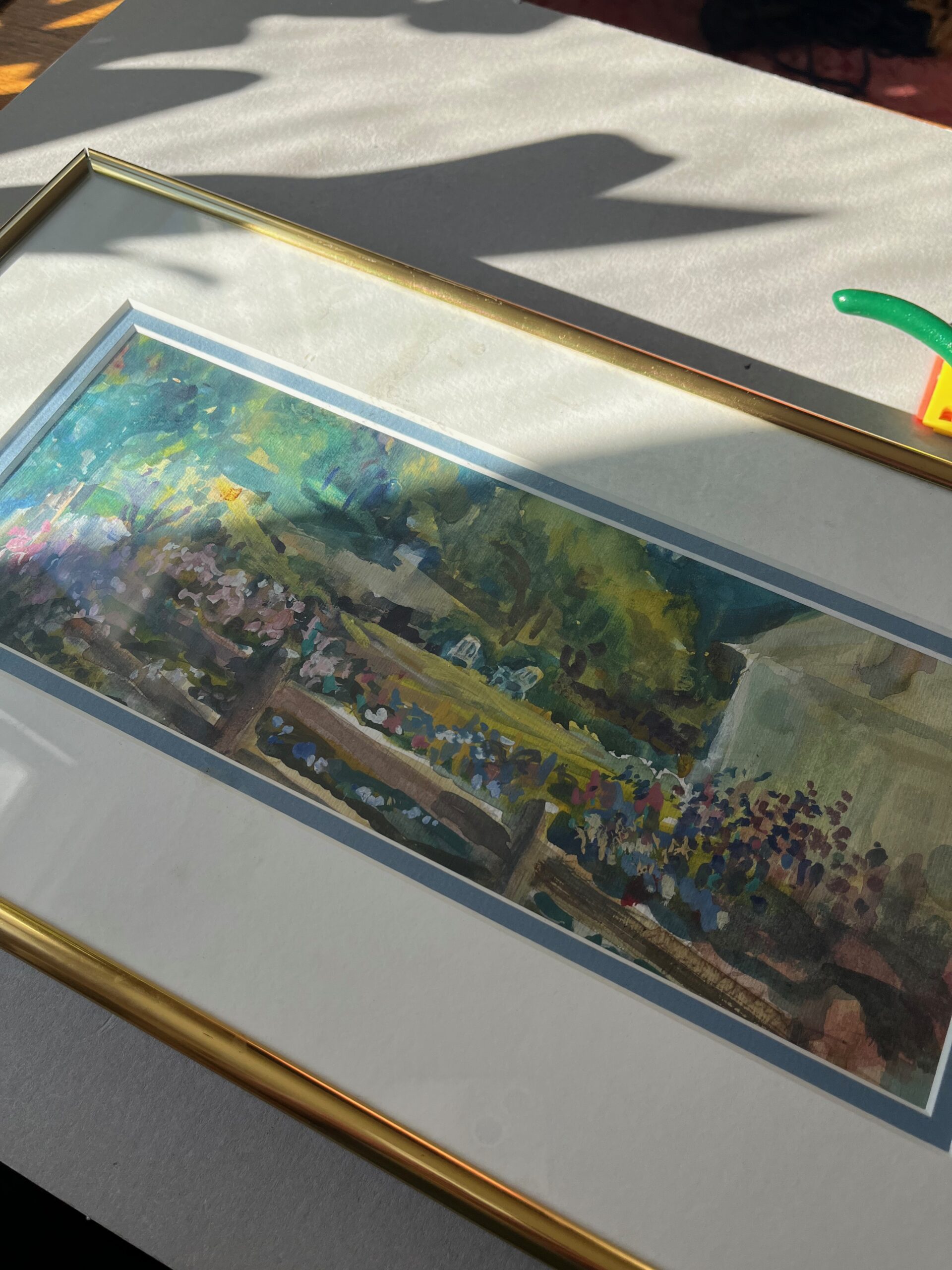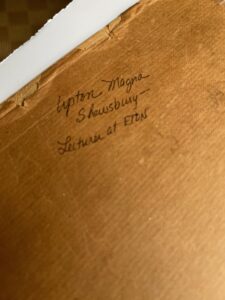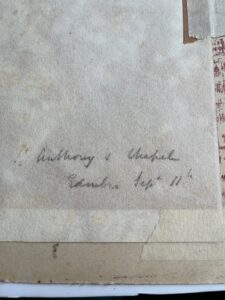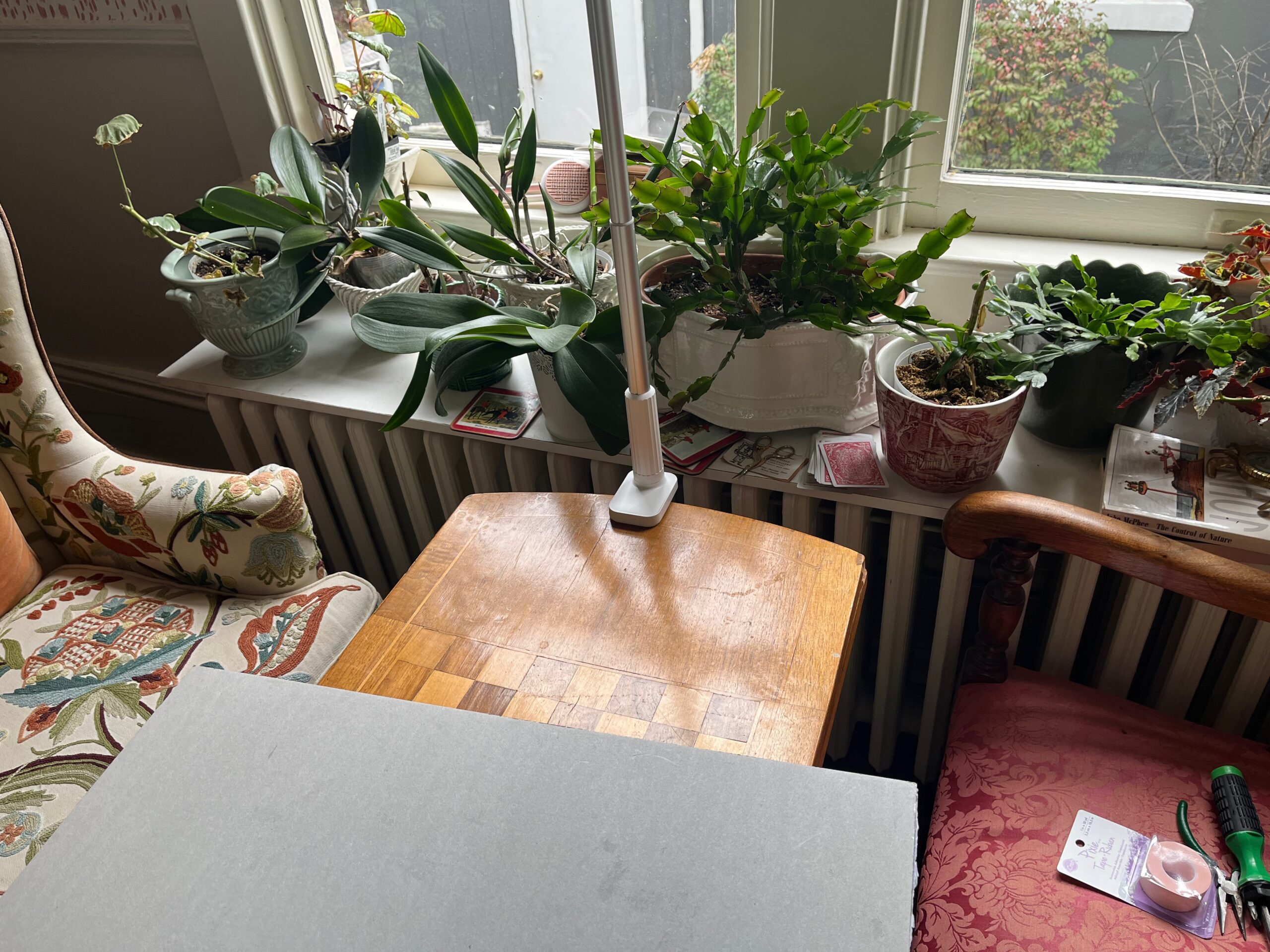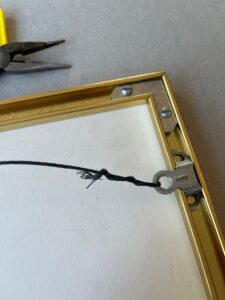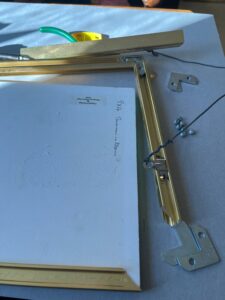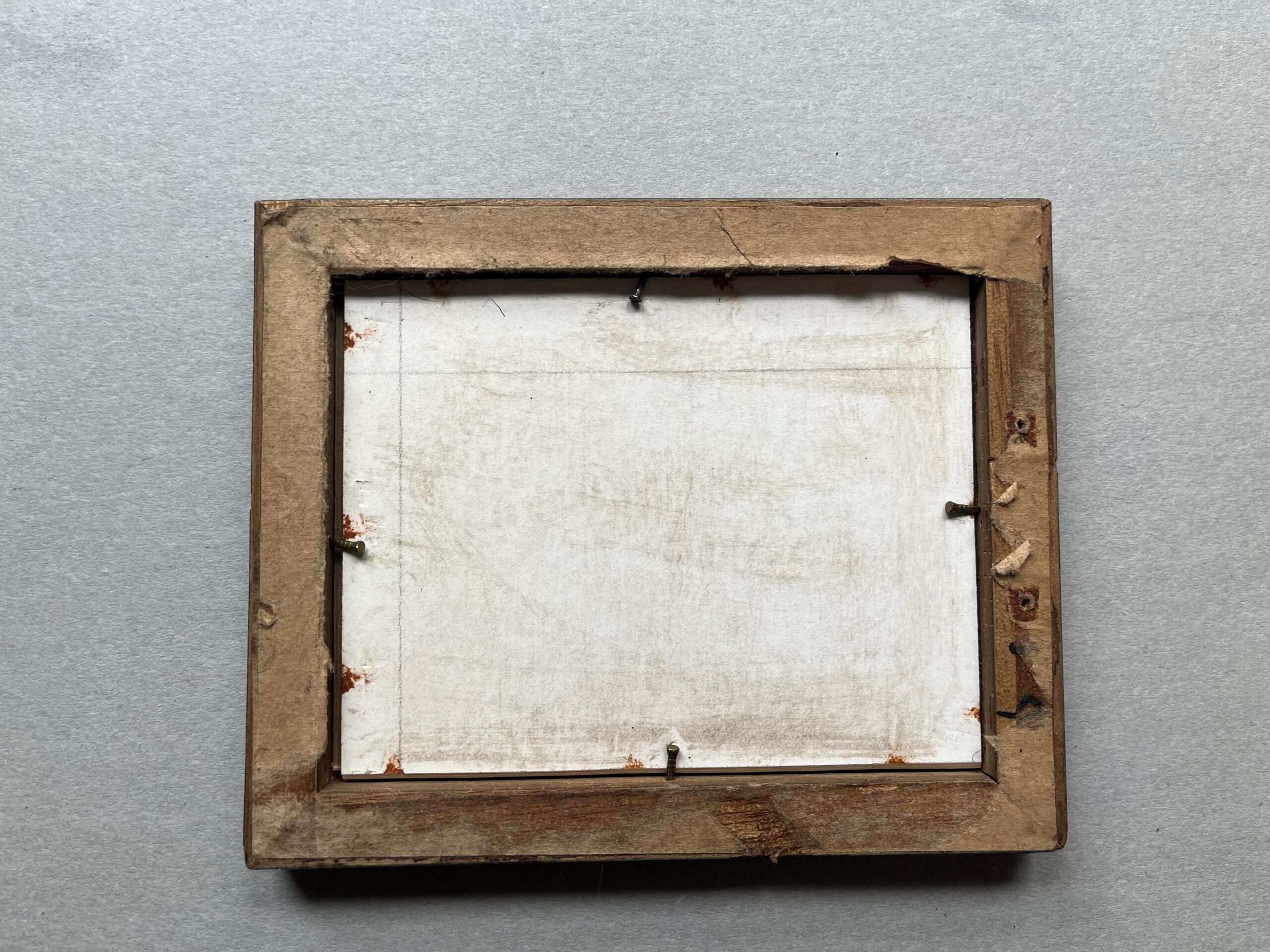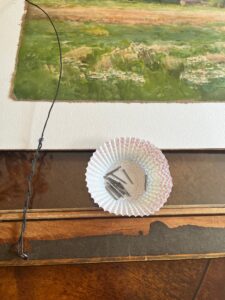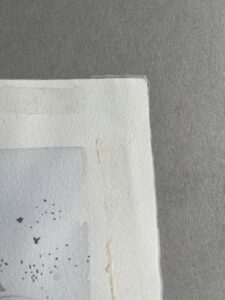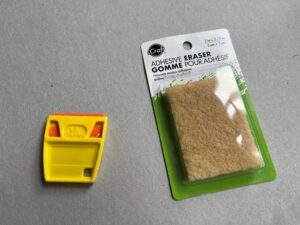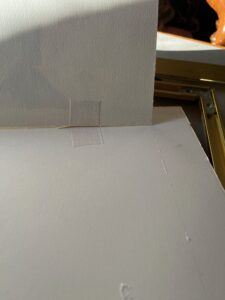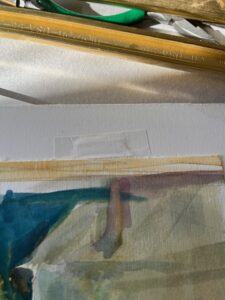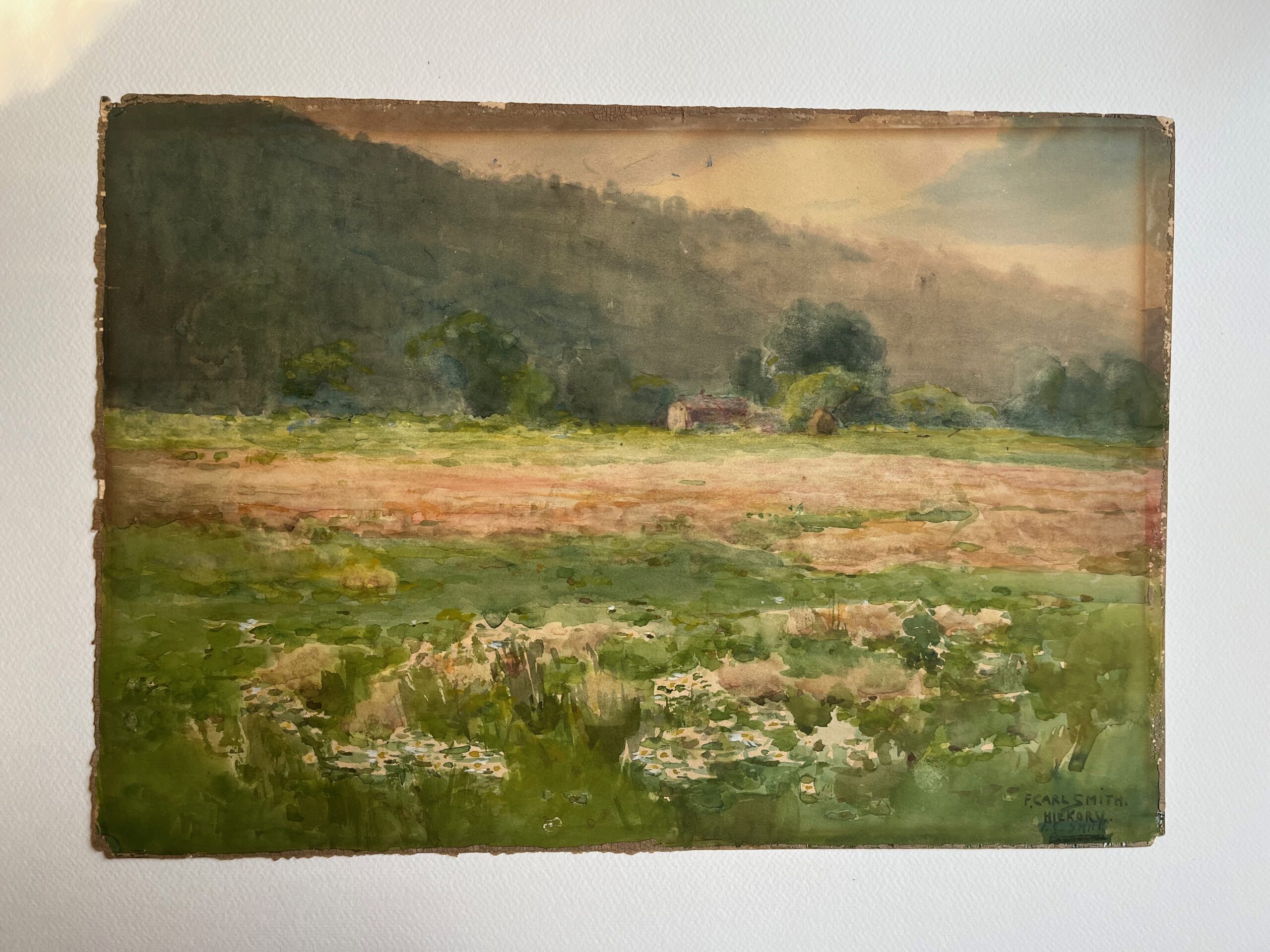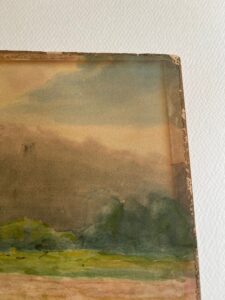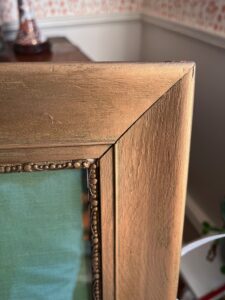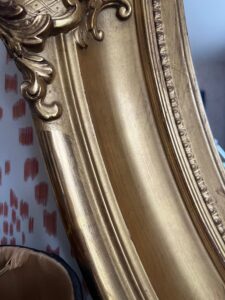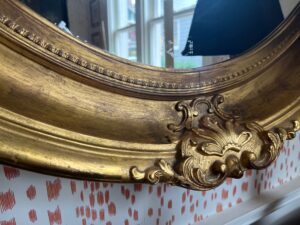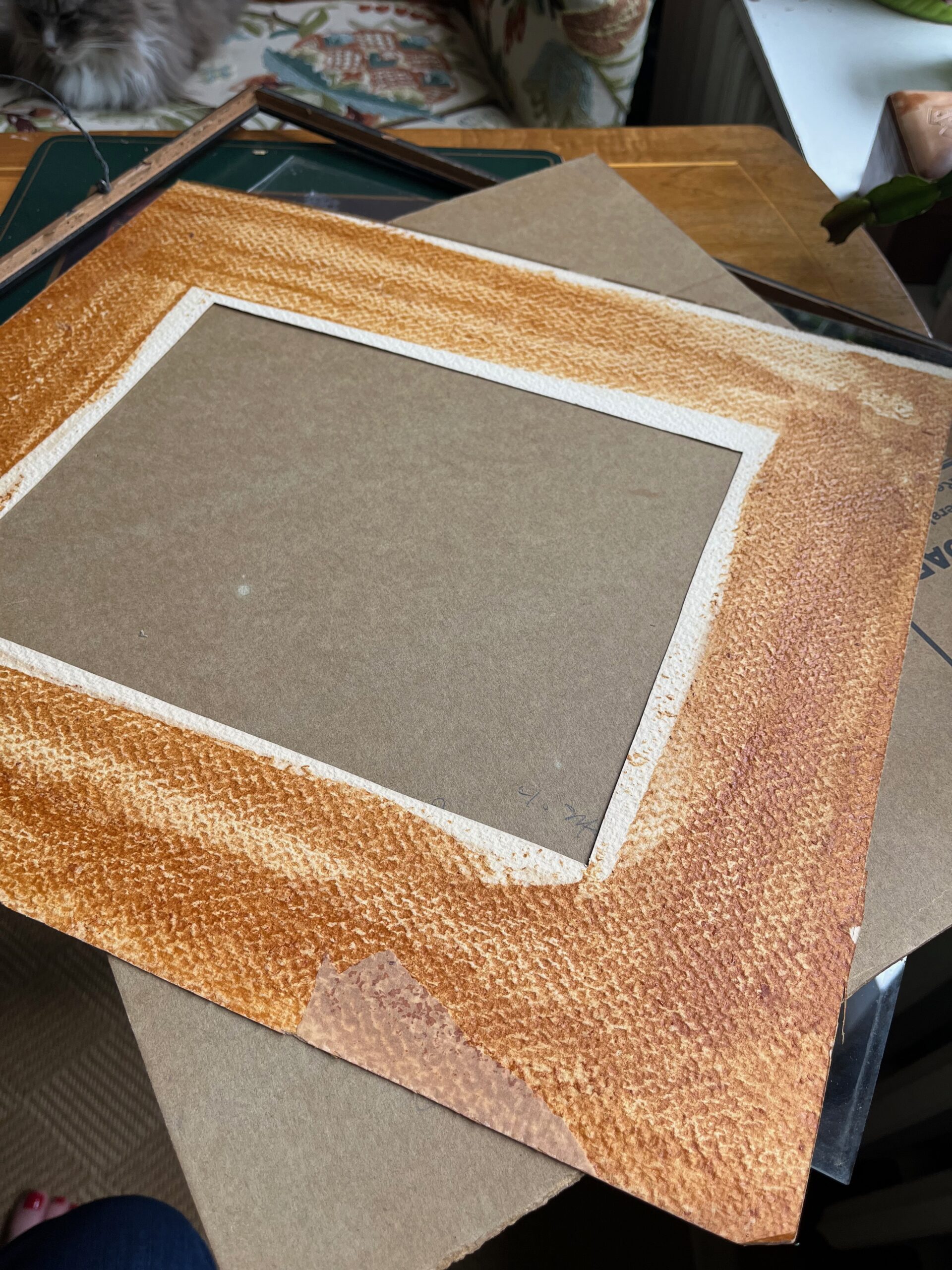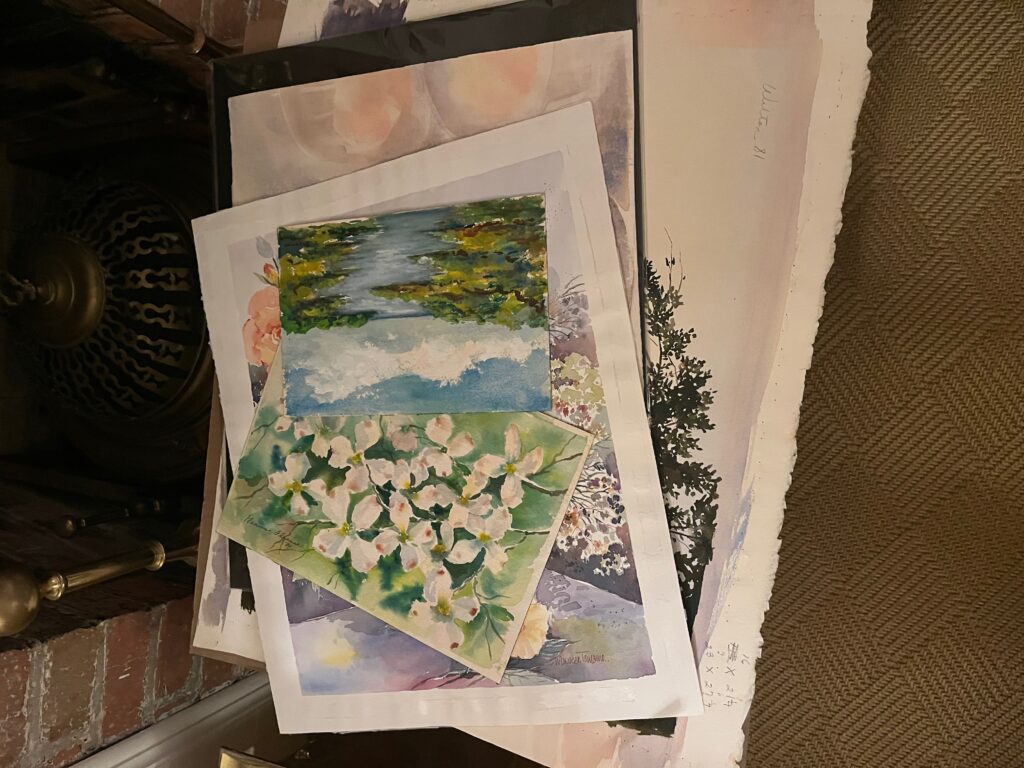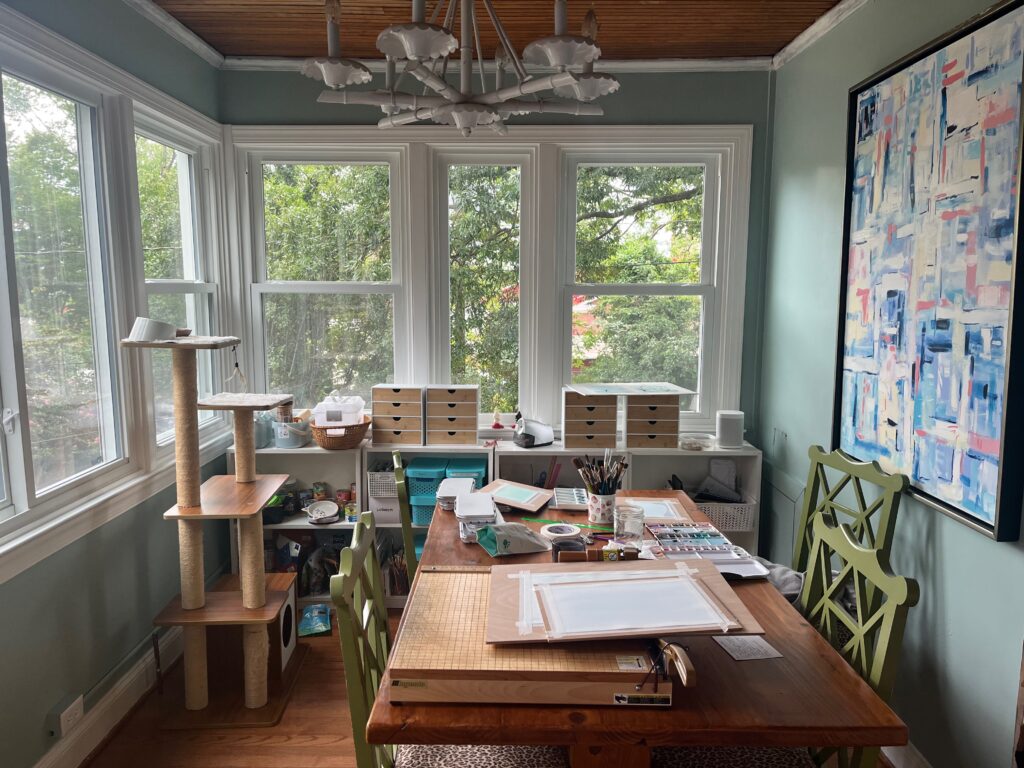This painting is from the 1920s and looks to have been reframed in the 1950s. The glue was all over the white field around the painting, too, and the painting in question is, again, old and nice and interesting. The top pic is of the back of the mat. This type of severe glue job is not something I would try to handle on my own. I have an appointment with a conservator to talk about that. Sometimes, you need to take your problem to a pro.
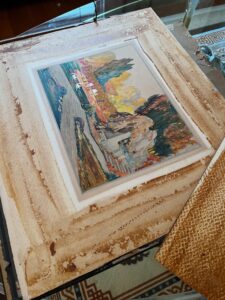
There is a scenario in which I might choose to cut out the piece and float it, rather than mat it. Around this particular piece, there is enough white space that I wouldn’t lose any of the painted area. But it is still also glued down to a backing board and I don’t know that I’ll have a good air bubble to get under and hope to get some easy separation. So this is why I will be going to a conservator before I try to do anything on my own. This is an expensive proposition, so do what makes sense to you. I just know I wouldn’t be happy with myself if I started going after it and ruined it, when I could have been patient and saved it.
Think about this: over the past few months, I have taken apart about 30 paintings, and this is the only one I have come across that is this much of a problem. So in the grand scheme of things, one out of 30 really isn’t bad.
You’ll notice I have said a few times that I haven’t decided what to do with something yet. I swear I do make decisions sometimes, but the rule with conservation is always to first, do no harm. If you don’t do anything, it’s better than doing the wrong thing. A lot of old paintings on canvas were damaged (again in the mid-20th century) by well-meaning conservators and curators by being re-lined.
You can always just put it back together, do nothing, no harm no foul, and hope it doesn’t do any further damage. Live to fight another day, as it were. And as long as you like the way it’s framed, and it doesn’t have a creeping mold or something under there, it should probably be fine. In fact, as technology improves, we have better and better ways of dealing with the mistakes of the past.
